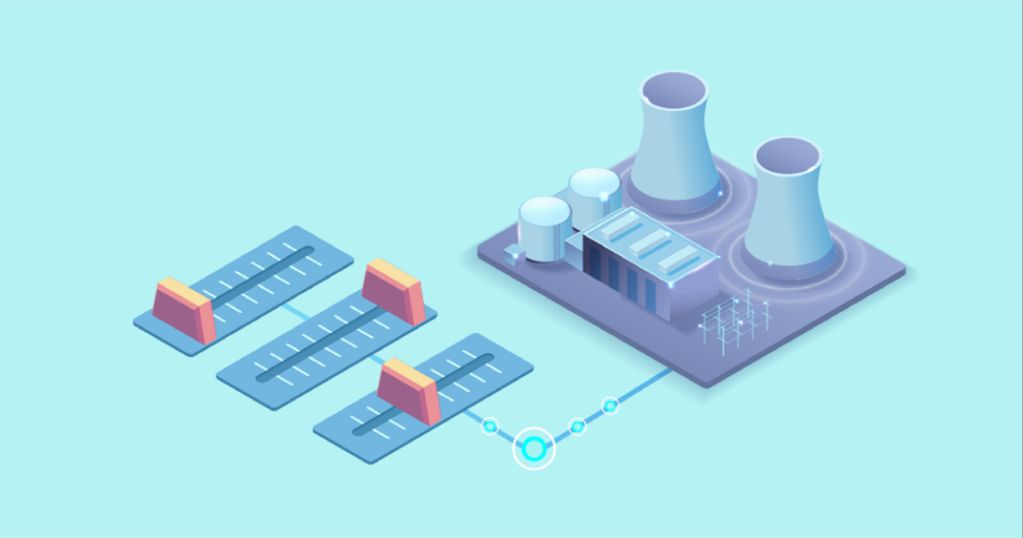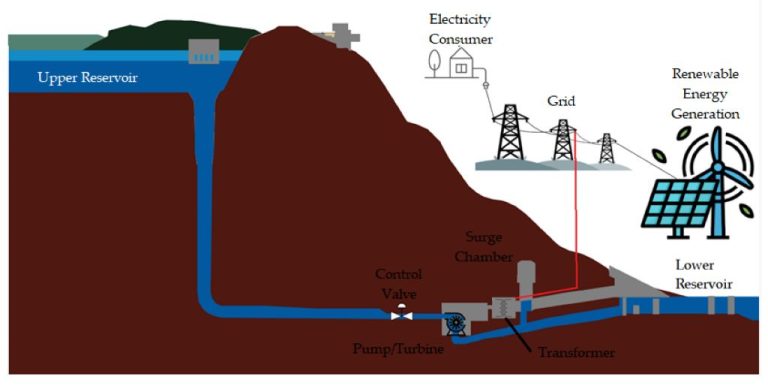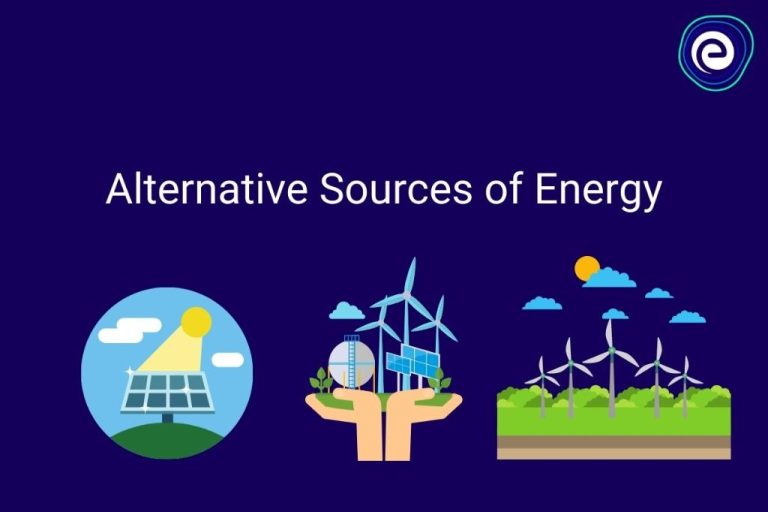Which Type Of Power Plant Is The Most Flexible?

Power system flexibility refers to the ability of a power system to respond and adapt to changes in electricity supply and demand. As more variable renewable energy sources like solar and wind are integrated into grids, flexibility becomes increasingly important to balance supply and demand. Flexibility enables grid operators to ramp power plants up or down to accommodate fluctuations in renewable generation. It also allows consumers to shift demand to times when supply is high. With high levels of flexibility, a power system can seamlessly integrate higher amounts of renewables while maintaining reliability.
Flexibility provides multiple benefits for power systems. It reduces the need for curtailment of renewables when supply exceeds demand. It also decreases reliance on building new plants to meet peak demand. Overall, flexibility improves the efficiency and reduces the costs of operating power systems with significant renewable energy. This article will explore the flexibility of different types of power plants to understand which technologies provide the most flexibility to grids.
Coal
The most common type of coal power plant uses pulverized coal boilers to burn pulverized coal. In these plants, finely ground coal powder is blown into a combustion chamber and burned at high temperatures to heat water and produce steam that drives a turbine generator to produce electricity. They operate most efficiently at steady output levels rather than cycling up and down. These plants are less flexible than natural gas plants. Another type of coal plant uses fluidized bed combustion, where crushed coal is suspended and burned in a mixture of hot gases. This allows for more operational flexibility and can meet rapid load changes. However, pulverized coal plants still dominate coal generation.
Coal plants face challenges with cycling, which is starting up, shutting down, and ramping up and down generation to meet changing loads. Frequent cycling leads to thermal and pressure stresses which cause issues like fatigue, creep, and fireside corrosion in boilers and turbines. It also decreases efficiency and can increase emissions. While technical solutions exist, retrofitting plants is expensive. Coal plants were designed for steady baseload operation but now need greater flexibility to pair with renewables in a decarbonizing grid.
Sources:
https://netl.doe.gov/flextool
https://iopscience.iop.org/article/10.1088/1748-9326/abfd5a
Natural Gas
Natural gas power plants are highly flexible power sources due to the technology and fuel used. Most natural gas plants utilize a combined cycle configuration, which links a gas turbine and a steam turbine together to achieve greater efficiency. The gas turbine can ramp up power output quickly when electricity demand rises, while the steam turbine provides steady, constant power output.
Combined cycle natural gas plants are designed for flexible operations to ramp production up and down rapidly in response to changes in electricity demand. They can go from startup to full load in approximately 30 minutes. This load following capability allows them to complement intermittent renewable sources like wind and solar.
According to a study by the Union of Concerned Scientists, increasing the flexibility of natural gas power plants can help accommodate higher levels of renewable energy on the grid. The fast ramping ability makes natural gas an ideal complement to renewables in terms of grid reliability and stability (source).
Nuclear
Overview of nuclear power: Nuclear power plants generate electricity through nuclear fission, where atoms split apart and release heat energy that is used to boil water into steam to spin turbines. Nuclear power provides reliable baseload power, operating at maximum output over 90% of the time. Most nuclear reactors were originally designed to run steadily rather than ramp up and down to match demand.
Technical challenges with load following: According to the National Renewable Energy Lab report “Flexible Nuclear Energy for Clean Energy Systems” https://www.nrel.gov/docs/fy20osti/77088.pdf, nuclear power plants face technical constraints for load following, including xenon transients that occur when adjusting power output, thermal stresses on fuel rods, and challenges maintaining reactor cooling. Ramping output up and down can be damaging over time.
Economic challenges: As explained in the FERC report “Modeling Nuclear Power as a Flexible Resource” https://www.ferc.gov/sites/default/files/2020-08/W4B-1_Zhou.pdf, nuclear plants have high capital costs and low operating costs. It is economically optimal to run them at maximum capacity. Ramping up and down more frequently to provide grid flexibility would increase wear-and-tear costs and reduce revenues.
Hydroelectric
Overview of hydroelectric power: Hydroelectric power plants convert the energy of flowing water into electricity. A dam is typically used to control water flow and create a reservoir, allowing the water to be released through turbines to generate power. The amount of power generated depends on the volume of water flow and the height of the water drop.
Pumped storage capabilities: Hydroelectric plants with pumped storage can act as a large battery, storing energy for when it is needed. During periods of low electricity demand, excess generation capacity can be used to pump water uphill into a reservoir. When electricity demand is high, the water can be released to flow downhill through turbines and generate power.
Ability to quickly adjust output: One of the main benefits of hydroelectric power is the ability to quickly adjust output to meet shifts in electricity demand. The flow of water driving the turbines can be rapidly controlled, allowing hydro plants to provide load-following power and quickly ramp up or down.
Overall, hydroelectric plants are very flexible due to their energy storage capabilities and ability to start up quickly and adjust output. This makes them ideal for providing grid balancing services.
Source: Optimisation methods meet the smart grid
Solar
Utility-scale solar photovoltaic (PV) plants have been viewed as inflexible generation sources due to their variable solar output that depends on weather and time of day. However, modern solar PV plants can respond quickly to system operator dispatch signals and provide valuable grid flexibility services.
The main challenge with solar PV plants is their variable power output, which depends on the intensity of sunlight at any given location and time. Cloud cover and weather events can cause rapid fluctuations in solar power production throughout the day. This variability poses grid integration challenges and can make solar less valuable than more consistent power sources.
However, recent advances allow utility-scale solar PV plants to provide valuable flexibility services to the grid. By pairing solar with battery storage, plants can smooth out short-term variability in solar output. Solar inverters with advanced grid integration capabilities allow solar plants to provide fast frequency regulation, voltage support, ramp rate control, and other ancillary services that help maintain grid reliability.[1] With robust forecasting and advanced controls, system operators can dispatch solar plants to ramp production up and down quickly to accommodate net load changes throughout the day.
Overall, modern solar PV plants can be operated flexibly to provide grid reliability services nearly on par with conventional power plants. Grid-flexible solar enables much higher solar penetration levels on power systems. Pairing solar with storage and advanced inverter functions helps address solar variability challenges and unlocks the full potential of this renewable resource.
[1] https://www.nrel.gov/docs/fy15osti/63039.pdf
Wind Power
Overview of wind power: Wind power harnesses the kinetic energy of wind and converts it into electricity using wind turbines. Wind power is growing rapidly as a renewable energy source, but it faces challenges due to variability in wind speeds. The output from wind turbines can fluctuate significantly over short periods. This intermittency can create difficulties in balancing supply and demand on the grid. However, the variability of wind power has decreased over the past few decades due to improvements in forecasting wind availability and speed (1).
Variability issues: The variability of wind power output presents challenges for grid operators, who must ensure that supply and demand are constantly balanced. When wind speeds are low, other power plants may need to increase output or storage may need to be utilized. Conversely, when wind speeds are high, excess generation may need to be curtailed. This requires flexible backup power sources and robust transmission infrastructure (2).
Forecasting improvements: Wind power forecasting has advanced considerably, utilizing numerical weather prediction models and machine learning techniques. Day-ahead forecasts can predict output 24-48 hours in advance with about 5% error on average. Even shorter term forecasts of 0-6 hours ahead achieve under 3% error. Better forecasting enables grid operators to schedule the most cost effective backup generation and take other steps to accommodate wind variability (1).
(1) https://ieeexplore.ieee.org/abstract/document/9112076/
(2) https://ieeexplore.ieee.org/document/9112076/
Geothermal
Geothermal power plants generate electricity by using naturally occurring reservoirs of hot water or steam located beneath the Earth’s surface. The heat from these geothermal reservoirs is used to drive turbines connected to electricity generators (https://www.thinkgeoenergy.com/geothermal-providing-system-flexibility-for-americas-energy-system-and-economy/).
Geothermal plants are considered base load power plants, meaning they can provide a continuous supply of electricity to meet minimum demand. Traditional geothermal plants run continuously at maximum output and lack flexibility to adjust output to match changes in demand (https://gdr.openei.org/submissions/1280). This makes load following challenging for conventional geothermal plants.
However, new advancements are enabling certain geothermal plants to provide greater flexibility. Binary cycle geothermal plants that use hot water from lower temperature reservoirs can more easily vary their output. New fast-ramping turbine technologies also allow faster adjustment of power output. With these improvements, geothermal is becoming a more flexible resource capable of providing grid reliability services (https://www.nature.com/articles/d41586-024-00127-3).
Biomass
Biomass power plants use organic materials like wood, plants, or waste to generate electricity. The biomass fuel is burned in a boiler to produce high-pressure steam that spins a turbine and generator. Biomass power provides around 1.5% of total U.S. electricity generation.
The most common types of biomass power plants are direct-fired, co-fired, and gasification systems. In direct-fired systems, biomass is the only fuel used. Co-fired plants supplement biomass fuels with coal. Gasification systems use heat, pressure, and partial oxidation to convert biomass into a syngas that is then burned.
Biomass plants can cycle their output up and down more easily compared to coal or nuclear plants. However, they lack the rapid ramping capabilities of natural gas plants. Biomass plants can modulate output to accommodate fluctuations in electricity demand, but may require a few hours to start up from cold conditions.
According to a report by the IEA Bioenergy Task 32, “What is to be gained with more biomass power plant flexibility?” biomass plants can offer valuable grid balancing services, but continued technology development is needed to unlock the full potential of biomass flexibility. (source)
Conclusion
Based on the analysis, natural gas power plants emerge as the most flexible type of power plant. Their ability to rapidly ramp production up and down makes them well-suited to complement intermittent renewable sources like solar and wind. Gas turbines can reach full power output in 10-20 minutes, far faster than coal or nuclear plants. This load following capability balances grid demand efficiently. While certain hydroelectric facilities can react quickly, gas has more control over output changes. Overall, natural gas plants offer the optimal combination of fast ramp rates, part-load efficiency, and low startup times. With ample natural gas supply and low prices in North America, building highly flexible gas plants is an effective way to balance renewable energy and ensure grid reliability.





